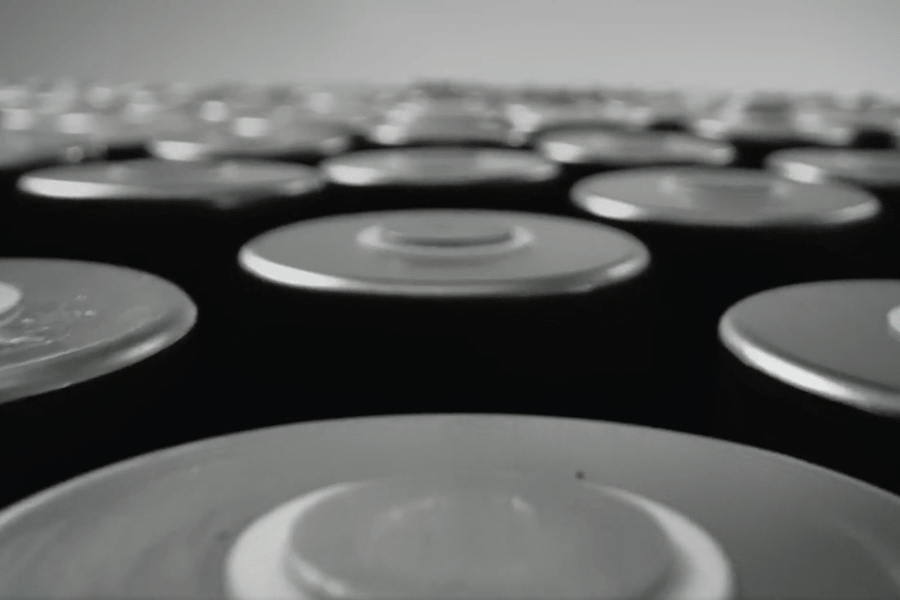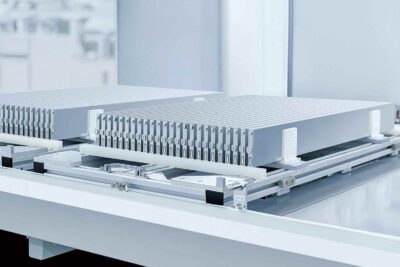Tesla allegedly plans 4680 cells with dry coating in 2024
The Chinese Late Post, citing insiders, reports that Musk wants to mass-produce the first 4680 cells with dry-coated electrodes before the end of 2024 and use them in customer vehicles. If this does not work, Tesla could give up on its 4680 cell.
Tesla first presented the 4680 round cell at Battery Day in 2020. However, dry coating of the electrodes is essential to realising all the advantages of the cell announced at the time, including price and factory size. Up till now, battery electrodes have been coated using what is known as the wet process. It involves mixing a powdered mixture of the active materials with solvents and other chemicals to form a paste, which is applied in a thin layer to the carrier film. The electrodes are then dried in very large ovens, which is energy-intensive and thus very expensive. With dry coating, that is no longer necessary – nor are the costly ovens.
According to the Late Post, the 4680 cells that Tesla is currently installing in the Cybertruck are a kind of a hybrid: the anode is already dry coated, but the cathode is not. Tesla still buys them from suppliers such as LG, where they are coated using the classic wet process. The production of cathodes with dry coating is the most difficult part, but also the biggest lever for reducing costs.
Even though there are currently still challenges in transferring the production process to cathodes, according to one of the insiders, it could give Tesla a “serious boost” if the process could be mastered. However, the cell has not yet reached the level of performance and cost Tesla had hoped for.
According to a report by The Information, Musk is said to have asked the battery team to reduce costs by the end of the year and to develop ‘one of the most important innovations’ by then – probably referring to the dry coating of the cathode. The Information refers to three informants. Two of these sources also state that Musk may give up on the cell if the problem is not resolved by the end of the year.
However, that is not certain and would only affect Tesla’s own production of 4680 cells. It would not mean the end of 4680 cells in Tesla models. The manufacturer could still buy the cells from suppliers such as Panasonic – but it remains to be seen at what cost if dry coating ist not a viable option.
There are also reports that Tesla succeeded in developing cathodes with a high manganese content. Manganese-rich cathodes are cheaper than materials with a high nickel content, for example, but their cycle stability was so low that they could not be considered for use in electric vehicles. The ‘doped, manganese-rich cathode active materials’ for which a patent application has now been filed could have extended the service life of such cells. However, 94 per cent of the original capacity has been achieved after 50 cycles. Although this is better than previous manganese cell chemistries, it is still well below the level required for electric cars.
Update 31 July 2024
Roughly two weeks after reports emerged about possible delays in the development of 4680 battery cells with dry-coated cathodes, a Tesla engineer has provided an interesting update. On LinkedIn, Cole Otto, Senior Manufacturing Engineer 4680 Cell Development, writes: “Introducing the first-ever Dry Cathode Cybertruck! In July, we kicked off vehicle testing with our groundbreaking in-house dry cathode 4680 cells.”
Otto says this is “a significant milestone in advancing both technology and cost efficiency.” Dry coating eliminates some particularly energy-intensive steps in electrode production, which not only makes production facilities smaller and cheaper, but also significantly reduces the amount of cleanroom space required – which, in turn, saves costs and energy.
Most recently, Tesla apparently used a type of hybrid cell: The anode, a copper foil coated with graphite, could already be produced using the dry coating process. For the more complex cathode, where a mixture of active materials is applied to an aluminium foil, wet-coated cathodes purchased from LG are said to have been used. It is not clear from the LinkedIn post on the first test vehicle how close Tesla is to producing the dry cathodes in large quantities.
weixin.qq.com (in Chinese), teslarati.com, theinformation.com (paywall), electrek.co (all 4680 cells), electrek.co (manganese cathode), linkedin.com (update)





0 Comments